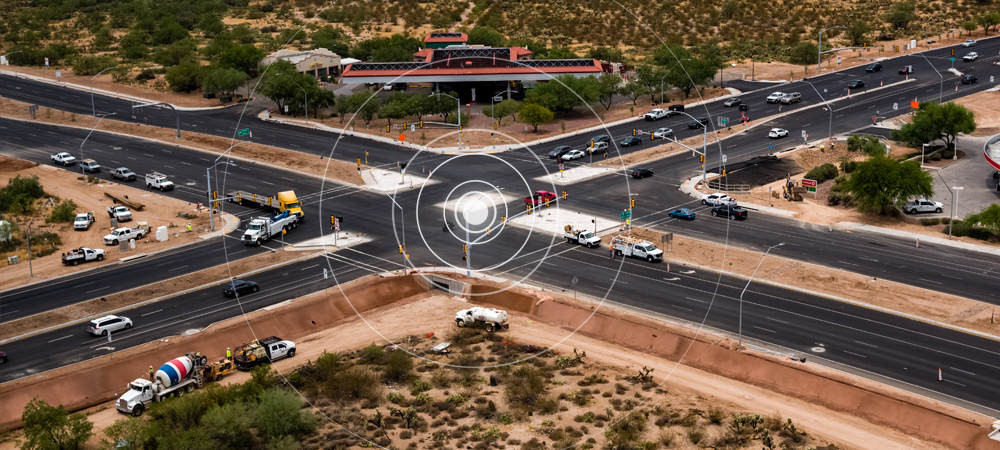
Pima Association of Governments collaborates with its jurisdictional partners to explore how advanced technologies can be applied to better manage performance of the transportation network and the delivery of transportation projects or services in the Tucson metro area.
This includes smart signal scheduling and responsiveness, and the evolving opportunities to improve signal operations through advanced technology. Transportation systems and operations ensure that traffic signals are synchronized to improve safety and efficiencies for motorists, pedestrians, bicyclists and transit vehicles.
Applying technology while keeping the lines of communication open within and between jurisdictions in the region is a tried-and-true route to get to the best regional transportation operational outcomes.
PAG’s deployment of technology for regional planning efforts can be distilled into two categories:
- Anticipating funding needs for future technological solutions to transportation operations management (ex., budgeting for new traffic signal technology).
- Using data and technology as tools to anticipate future transportation challenges and solutions (travel modeling, growth projections).
As part of its long-range planning activities to meet future implementation goals and objectives, PAG examines potential technology options and investment opportunities with its jurisdictional partners.
Technology in transportation modeling
Transportation modeling relies on technology to anticipate how technology itself will change our travel patterns in the future. Traffic modeling includes understanding and predicting increased use of curbside product and service delivery, rideshare technology and other transportation innovations that affect how the transportation system operates.
A number of technological formats enable more accurate modeling, including anonymized cellular phone data and smart traffic signals that can help planners identify patterns in traffic movement and the need for potential systemwide improvements.
PAG’s planning efforts rely on developing and updating technical tools to achieve the best projections for transportation planning. The work incorporates understanding current travel patterns, predicting future travel and transportation needs, and applying planned improvements to modeling programs to test outcomes.

